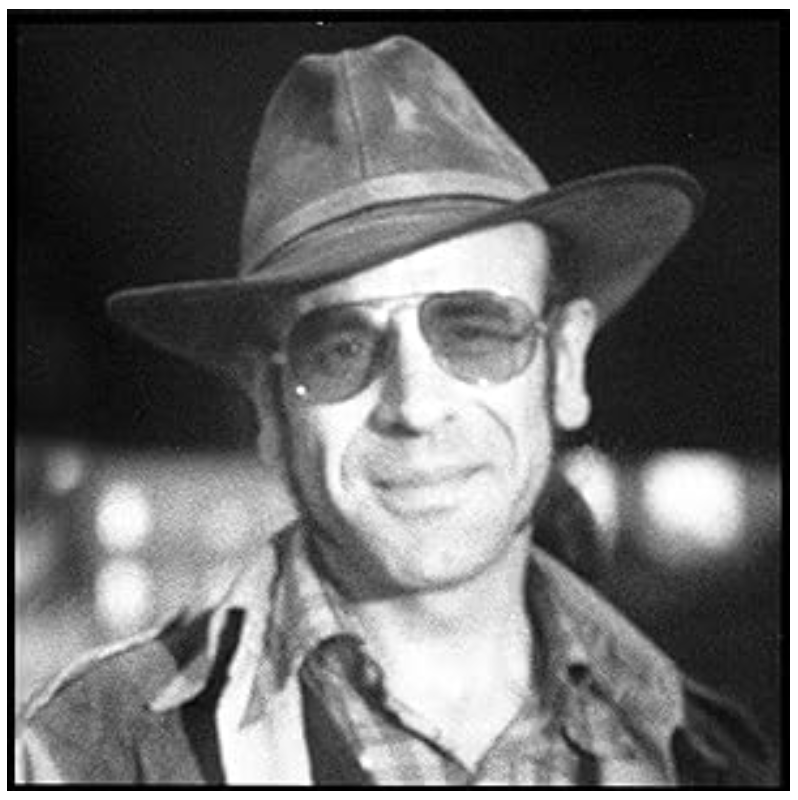One of the buildings that Joseph Papin drew for a column called “Undiscovered Manhattan” was the Dakota. Although the following article by Hope Cooke that ran with the drawing does not mention it, the Dakota was the residence of John Lennon of the Beatles and his wife, Yoko Ono, and the place where John Lennon was assassinated on December 8, 1980.

The article reads:
“In 1880, developer Edward Clark with architect Henry Hardenbergh built an apartment house – soon nicknamed the Dakota due to its isolated setting at 72nd St. and Central Park West.
“While the Dakota’s internal and external architecture was kept romantically picturesque to assuage any feelings of lost caste that tenants might suffer, utilities were quite modern. Giant boilers provided steam and electricity for the entire neighborhood.
“Though each apartment was provided with its own facilities, wives, increasingly involved in work outside the home, were pleased by the central kitchen and public dining room.
“Despite the housekeeping amenities, it took time to fill the Dakota as people continue to resist apartment houses in general, equating them with squalid tenements, loss of privacy and a breakdown of family. Even with a worsening housing shortage that demanded new compact solutions, rowhouses continued to be built for the first years of the century. Clark himself covered his bets and employed Hardenbergh to build rowhouses on side streets near the Dakota.
“Not for long. Within the decade, the Dakota, and many imitators, became the posh Manhattan mode.”
Written by Hope Cooke, illustration by Joseph Papin, Daily News, July 16, 1989
The following article describes more about Hope Cooke, the author of Undiscovered Manhattan:

NEW YORK JOURNAL – COOKE’S TOUR
“‘His land was originally a bog,’ says Hope Cooke to a small crowd in Washington Square Park. ‘In the 1790s, 22,000 victims of yellow fever were buried here. In 1824, a big celebration was held when twenty highwaymen were hung from that elm over there,’ she says cheerfully, pointing to the park’s northwest corner as the crowd titters. ‘And by 1830, it was developing as Washington Square, an enclave for merchants. Even the wealthy suffered from a housing shortage at that time, and imagine this—land values increased 750 percent!’
“Cooke, 48, the former Queen of Sikkim, leads Sunday walking tours for the Museum of the City of New York. A shy woman with shaggy hair, she becomes energized when she straps a Mini-Vox loudspeaker across her shoulder and begins a tour. ‘Once I get in tour-guide mode,’ she says, ‘I just keep talking, trailing my imaginary microfilm. Even when I go home, I keep talking.’
“Cooke, who lives in a Brooklyn brownstone with her second husband, a CUNY history professor, grew up on East 62nd Street, where she was raised by wealthy grandparents and a series of harsh nannies. (Her father ran off shortly after she was born, and before she was two, her mother died in a mysterious plane crash.)
“While a student at Sarah Lawrence, she traveled to India, where she met her first husband. In 1963, she married Crown Prince Palden Thondup Namgyal of Sikkim, the eastern-Himalayan kingdom annexed by India in 1973. They ruled Sikkim for ten years and had two children, but both their domestic and political lives were tumultuous. After India took over Sikkim, the marriage fell apart, and Cooke returned to New York with her children. (The king was later deposed, and he died in 1982.)
But Cooke felt ‘profoundly displaced’ in Manhattan. In order to understand her new environment, she went on walking tours. They inspired her to create her own.
“‘I’m interested in the social history of a neighborhood as much as its architecture,’ says Cooke, who researches the tours herself, studying everything from Dutch journals to old church sermons and newspaper articles.
“Cooke began her third season as a tour guide last week. Her tours this fall include ‘Whitman’s New York: SoHo to Brooklyn’ and ‘Urban Châteaux: Fifth Avenue.’
“During a tour of the East and West Villages, a group of 30 follows Cooke along winding streets that were once cow paths.
‘The story of these neighborhoods is the struggle for space on a very small island,’ she says. ‘Traditionally, the poor have kicked out the rich. Now, for the first time, we have a collision course going the other way.’
“At the end of the afternoon, Cooke sends the group off with a pep talk. ‘From the time of the Dutch, New York’s been run as a commercial center. We need to mix that with a more developed civic sense,’ she says. ‘Please keep it in mind.’”
ALEX PRUD’HOMME, SEPTEMBER 26, 1988/NEW YORK, Page 31, Photograph by Robin Holland. Illustration by Ruth Marten

Leave a Reply